20 Stunning Tall Outdoor Plants to Elevate Your Landscape
Tall outdoor plants can bring strong height, color, and interest to any garden space. Whether you are working with a small backyard or a large yard, adding taller plants helps create layers and depth. Some grow fast and provide shade or privacy, while others bloom with striking flowers that grab attention. Many tall plants also attract birds, bees, and butterflies. With the right mix of sun, soil, and water, these plants are easy to grow and care for. If you want your outdoor space to feel more alive and welcoming, tall plants are a great place to start.
This post may contain affiliate links, which helps keep this content free. Please read our disclosure for more info.
Bamboo

Bamboo brings height and a tropical feel to any outdoor space. With its fast growth and tall stalks, it creates a natural privacy wall that is both attractive and functional. Clumping varieties are a great option for home gardens because they do not spread as aggressively as running types. The plant thrives in full sun to partial shade and prefers well-draining soil.
Its vertical growth habit draws the eye upward, making small yards feel more spacious. Bamboo’s rustling leaves add sound and movement to the landscape. Regular trimming can help maintain its shape and height. It is a favorite for creating serene, Zen-style gardens.
Canna Lily

Canna lilies offer striking, tall foliage and bold flowers that can reach up to six feet. The large, paddle-shaped leaves come in shades of green, bronze, or striped patterns. Their vibrant blooms appear in summer and can be red, yellow, orange, or pink. These plants do well in full sun and rich, moist soil.
Because of their height and tropical appearance, they make excellent focal points or border plants. Canna lilies also grow well in containers if you want a more controlled display. In colder areas, they need to be dug up and stored during winter. With regular watering and feeding, they continue to bloom through the warm season.
Hollyhock

Hollyhocks bring old-fashioned charm with their tall spires of flowers. They can grow between five to eight feet and are often found lining fences or walls. The blooms appear in late spring and come in a variety of colors including pink, red, white, and yellow. They thrive in full sun and prefer well-drained soil.
Although technically biennials, they reseed easily and return each year. Hollyhocks attract butterflies and bees, adding movement and life to the garden. They may require staking in windy areas to prevent bending. A regular spray of water at the base can help avoid rust, a common leaf disease.
Joe Pye Weed
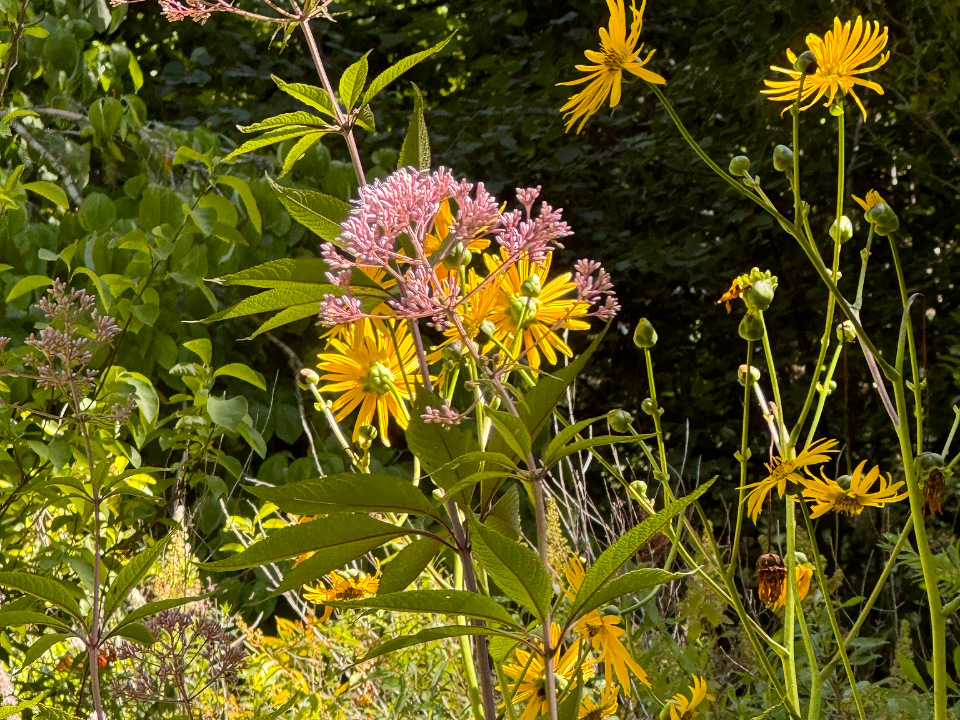
Joe Pye Weed is a native perennial known for its clusters of pinkish-purple flowers and height of six to seven feet. It blooms from mid-summer to early fall and thrives in moist soil and full to partial sun. This plant is popular in pollinator gardens because it attracts butterflies, especially monarchs.
It has a bushy shape with tall, sturdy stems that do not usually need staking. Joe Pye Weed works well at the back of borders or along ponds and wetlands. In colder months, the dried seed heads add structure to the winter landscape. Cutting it back in early spring encourages new growth.
Pampas Grass

Pampas Grass features tall, feathery plumes that can rise up to ten feet above the ground. It prefers full sun and well-drained soil. The dense clumps of arching leaves create a bold texture in the garden, and the silvery plumes appear in late summer.
This grass is often used to create natural screens or to anchor open spaces. It does require room to grow, as it can spread wide. In late winter or early spring, cutting it back helps to refresh the plant for the next season. Be cautious of its sharp-edged leaves when pruning.
Sunflower
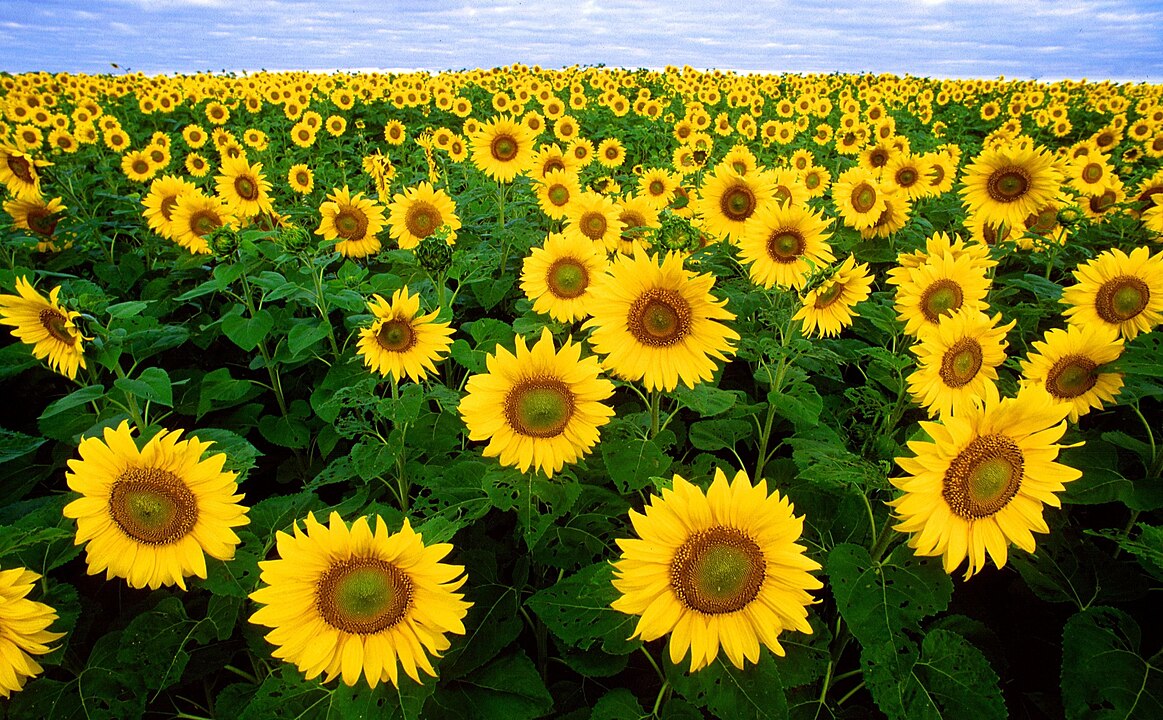
Sunflowers are cheerful plants that easily grow up to ten feet tall, depending on the variety. They need full sun and loose, fertile soil to thrive. Their large yellow blooms track the sun throughout the day, creating a lively atmosphere.
They are excellent for back borders or as temporary screens during the growing season. Sunflowers also attract pollinators and birds who enjoy their seeds. Tall varieties may need staking to prevent tipping. They are easy to grow from seed, making them a fun option for gardeners of all ages.
Castor Bean Plant
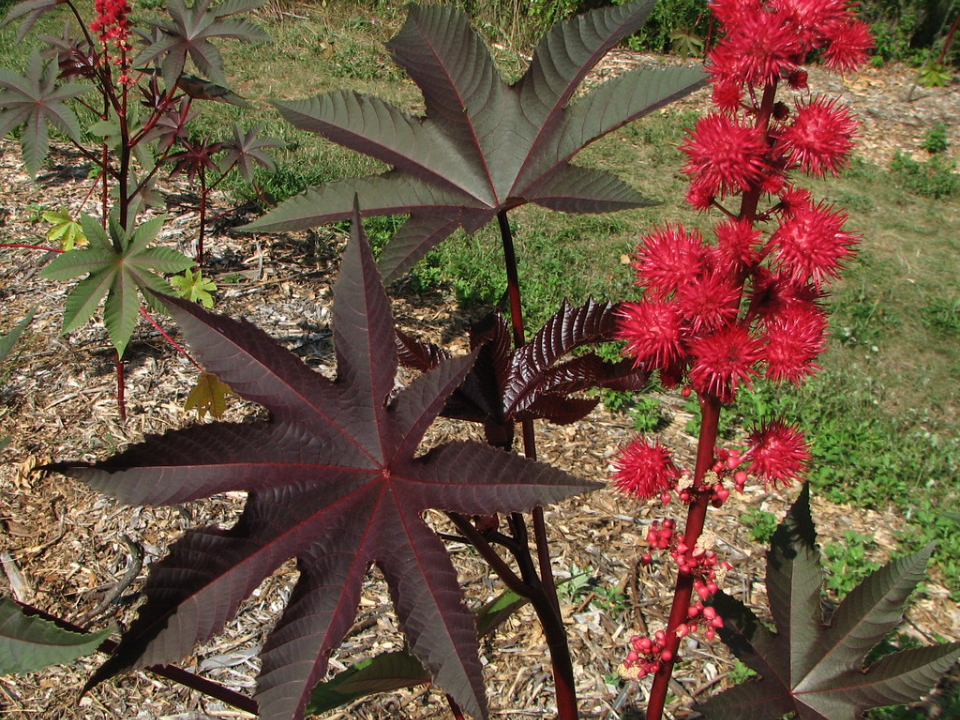
The Castor Bean Plant features bold, tropical-looking foliage and grows up to ten feet in one season. Its star-shaped leaves can span over a foot across and are often deep green or reddish-purple. This plant enjoys full sun and well-drained soil.
It adds drama and color to the landscape with very little effort. While beautiful, it is important to note that all parts of the plant are toxic if ingested. It works well as a standalone centerpiece or in the back of large garden beds. Regular watering and occasional feeding help it maintain vigorous growth.
Foxglove

Foxglove is a striking plant with spires of bell-shaped flowers that can reach up to six feet tall. The blooms come in shades of pink, purple, yellow, and white, and usually appear in early to mid-summer. It prefers partial shade and moist, well-drained soil.
Often found in cottage gardens, foxglove draws hummingbirds and bees. Although it is a biennial, it self-seeds and can return each year. The tall blooms add vertical interest behind shorter plants. As with many tall plants, a little staking helps maintain their upright form.
Delphinium
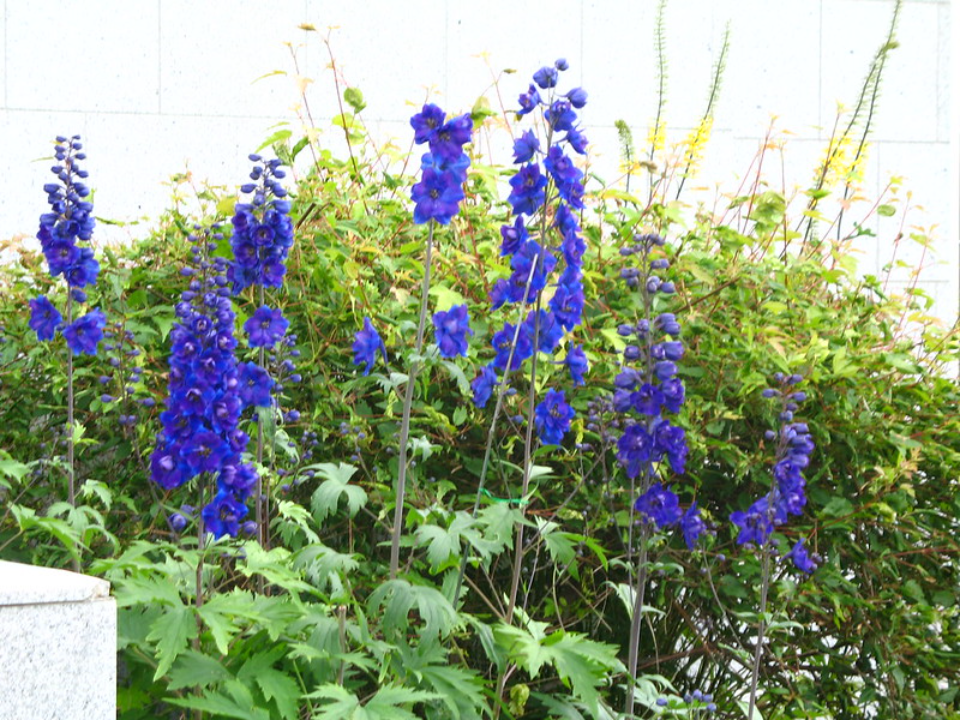
Delphinium features upright spikes of flowers in vibrant blue, purple, pink, and white shades. Growing up to six feet, it prefers cool weather, full sun, and rich, well-drained soil. The blooms appear in early summer and may return in late summer with proper care.
Because of their height and elegance, they are often used in formal garden beds. Delphiniums may need support to avoid toppling during storms. Mulching helps maintain soil moisture and keeps roots cool. Cutting spent flowers encourages more blooming later in the season.
Cardinal Flower

Cardinal Flower stands out with its bright red blooms and tall, slender stems that can grow up to four or five feet high. This plant thrives in moist, rich soil and does best in partial shade, making it a great choice for the edge of ponds or rain gardens. The vivid color of the flowers makes it a magnet for hummingbirds during late summer.
Though short-lived as a perennial, it reseeds easily and often returns year after year. It benefits from mulching to help retain moisture and protect roots during winter. Deadheading can extend the blooming period, while leaving some seed heads allows natural reseeding. The tall spikes provide a burst of height and color in mixed borders.
Rose Mallow

Rose Mallow, also known as hardy hibiscus, is a large perennial with massive flowers that can be up to ten inches wide. Its height ranges from four to seven feet depending on the variety. It thrives in full sun and moist soil, especially near water features or in low spots of the garden.
This plant brings a tropical feel with its bold blooms, often in shades of white, pink, or red. Its late summer flowering time adds interest when many other perennials have faded. Pruning old stems in early spring helps promote strong new growth. Despite its tropical appearance, it survives winter well in many climates.
Russian Sage

Russian Sage adds both height and a soft, airy texture to garden beds. Growing up to five feet tall, it features silvery stems and lavender-blue flowers that appear from mid-summer to fall. It prefers full sun and thrives in dry, well-drained soil, making it ideal for drought-tolerant gardens.
Its aromatic foliage is deer-resistant and attracts pollinators such as bees and butterflies. Russian Sage looks striking planted in large swaths or along fences. It requires little maintenance beyond cutting back in early spring. This plant works especially well in combination with ornamental grasses and other sun-loving perennials.
Prairie Dock
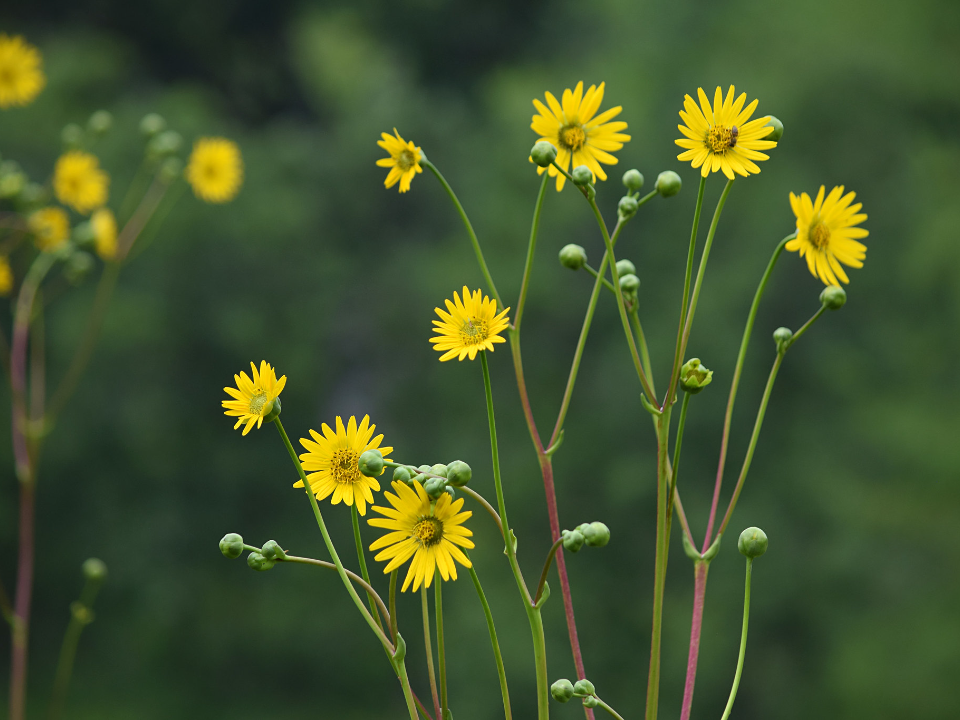
Prairie Dock is a native wildflower with huge basal leaves and tall flower stalks that can reach over eight feet. It prefers full sun and rich soil, especially in natural or prairie-style gardens. Its yellow, daisy-like flowers bloom in late summer and are held high above the foliage.
This plant adds strong vertical lines to a landscape while supporting native wildlife. Its deep roots help it tolerate drought once established. Prairie Dock may take a season or two to mature, but it becomes a lasting part of the garden. Its leaves stay low, allowing other plants to grow around its tall stems.
Taro
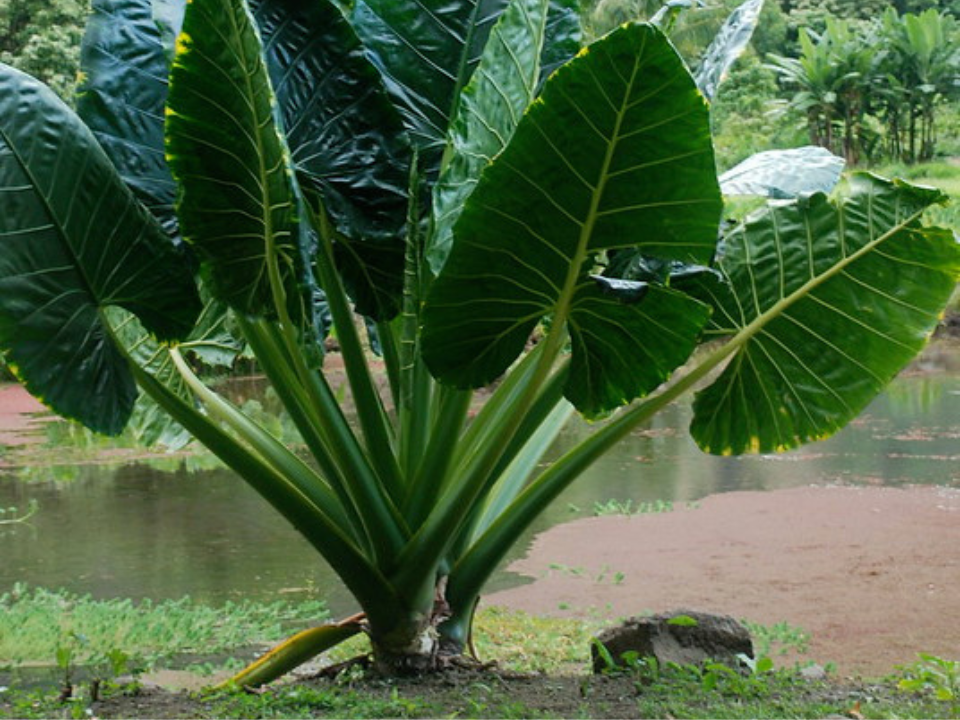
Taro is grown primarily for its oversized, heart-shaped leaves and dramatic presence. This tropical plant can reach six feet in height when given warm temperatures, moist soil, and partial shade. The leaves come in green, purple, or variegated patterns depending on the variety.
Taro is often used near water features or in containers for added impact. It needs regular watering to keep its soil consistently damp. While not hardy in colder regions, the tubers can be lifted and stored during winter. It is a favorite for gardeners who want foliage that makes a strong visual statement.
Giant Reed (Arundo donax)
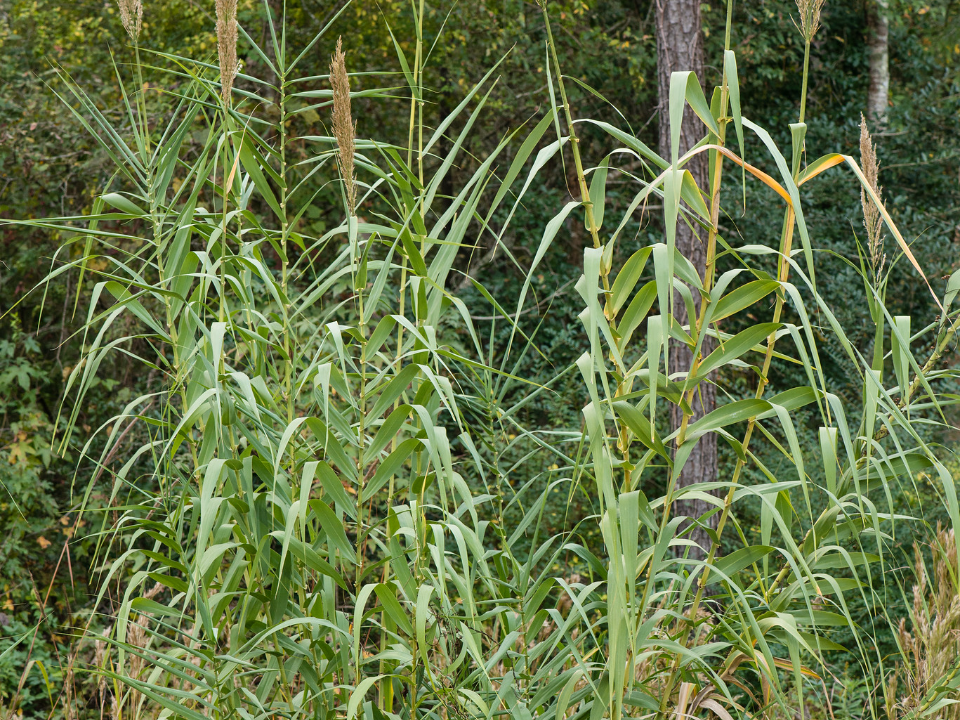
Giant Reed is a tall grass that resembles bamboo and can reach heights of fifteen to twenty feet. It grows quickly in full sun and moist soil and is often used as a windbreak or privacy screen. Its arching green leaves and sturdy stalks give it a bold presence in large landscapes.
Because of its size and rapid growth, it is best suited to wide spaces where it can spread without crowding out smaller plants. Regular trimming and root barriers may be needed to keep it in check. Giant Reed is often used in naturalized settings or along large property lines. It is not ideal for small gardens due to its aggressive nature.
Meadow Rue
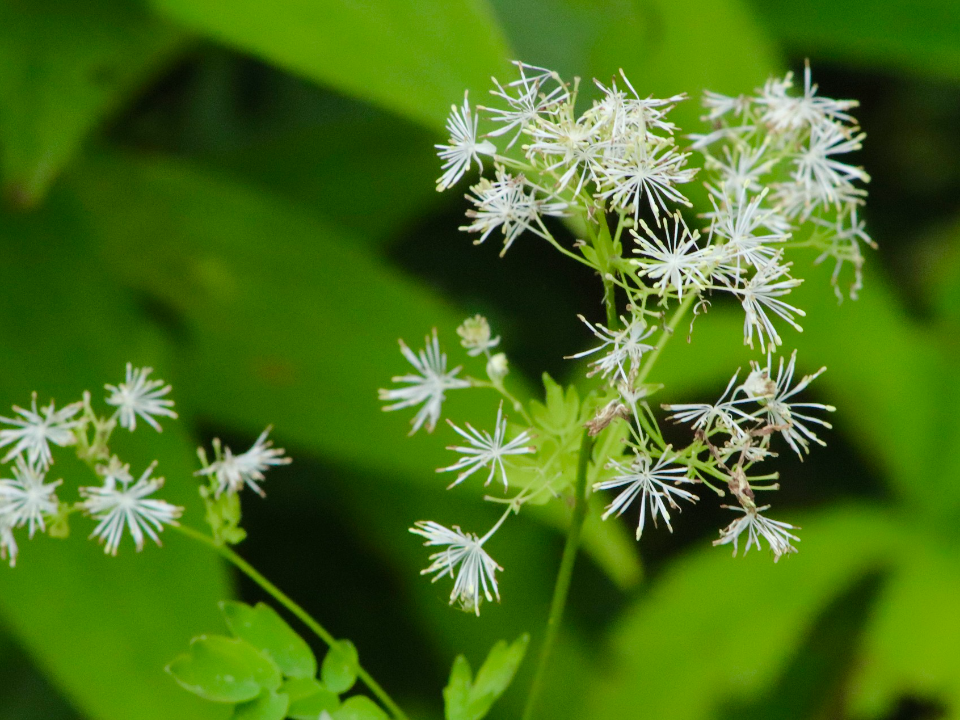
Meadow Rue is a tall perennial with delicate, lacy foliage and airy flower clusters. It can grow up to six feet and prefers partial shade and moist soil. The flowers appear in soft shades of lavender, white, or yellow during mid to late summer.
This plant adds a soft texture and movement to shady beds and woodland gardens. Though it looks fragile, its tall stems are usually strong enough to stay upright. It pairs well with hostas, ferns, and other shade-loving perennials. Meadow Rue is also deer-resistant, which makes it useful in areas where browsing is a concern.
Cup Plant
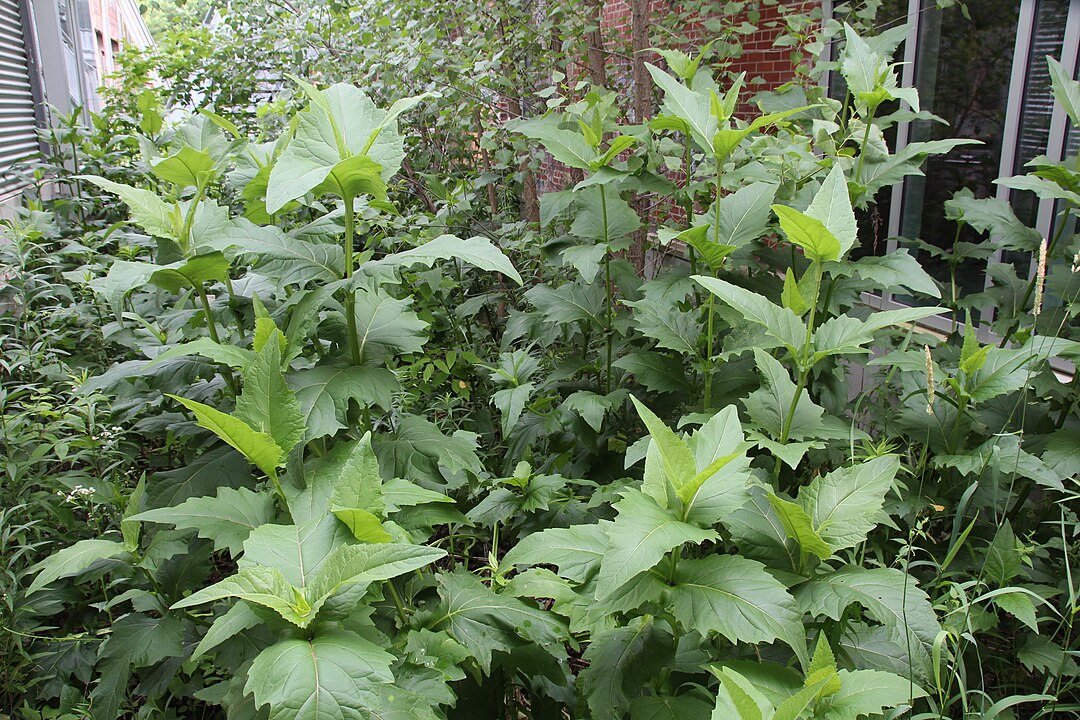
Cup Plant is a tall native perennial that can reach up to eight feet in height. It gets its name from the way its leaves form a cup around the stem, which can hold rainwater and attract birds and insects. Bright yellow flowers bloom in mid to late summer.
This plant prefers full sun and moist to average soil and works well in prairie-style or naturalized gardens. It spreads by seed and underground stems, so it may need space to grow. Its height and sturdy stems make it useful as a screen or at the back of borders. Cup Plant also supports native pollinators and adds ecological value to the garden.
Jerusalem Artichoke
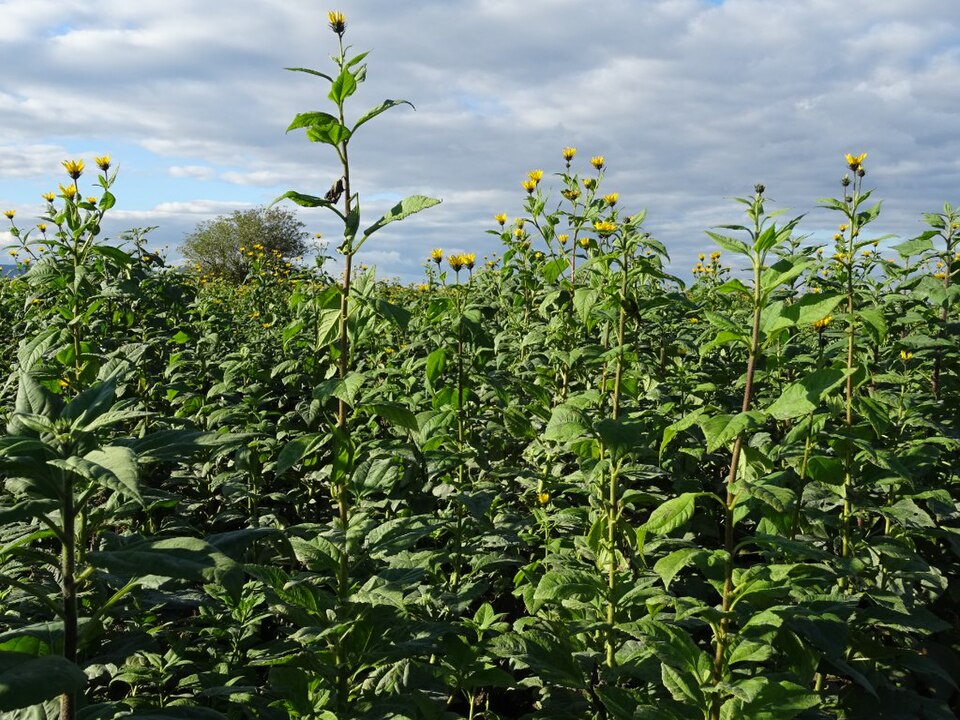
Jerusalem Artichoke is a sunflower relative with tall stems that can reach up to ten feet. It grows best in full sun and well-drained soil and produces small yellow blooms in late summer. Below ground, it develops edible tubers that can be harvested in the fall.
This plant spreads quickly and is best planted where it can grow freely without overtaking smaller neighbors. It is popular in permaculture and homestead gardens due to its dual use as an ornamental and edible crop. Staking may be needed if wind is a concern. It dies back in winter and returns strongly each year.
Globe Thistle
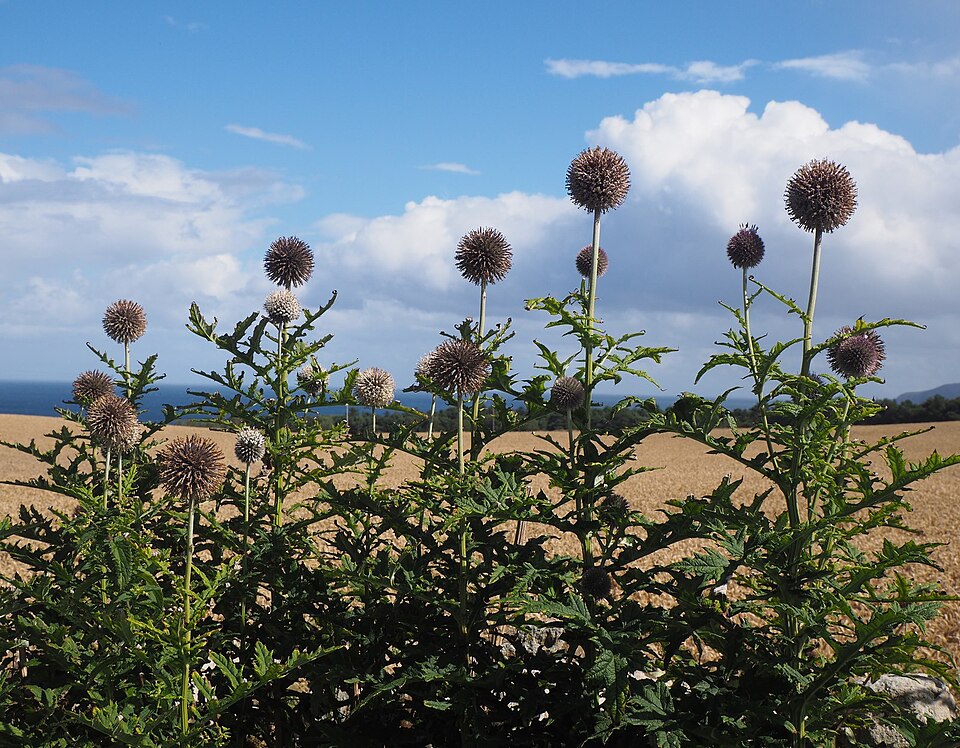
Globe Thistle offers unique spherical blooms in shades of blue and purple. It reaches four to five feet in height and thrives in dry, sunny conditions with well-drained soil. The spiny foliage is both deer-resistant and drought-tolerant.
Its flowers attract bees and butterflies throughout summer and into fall. Globe Thistle adds texture and interest to mixed borders or drought-friendly gardens. Once established, it requires little maintenance and can be divided every few years. Leaving the seed heads on in fall adds winter appeal to the garden.
Tree Mallow
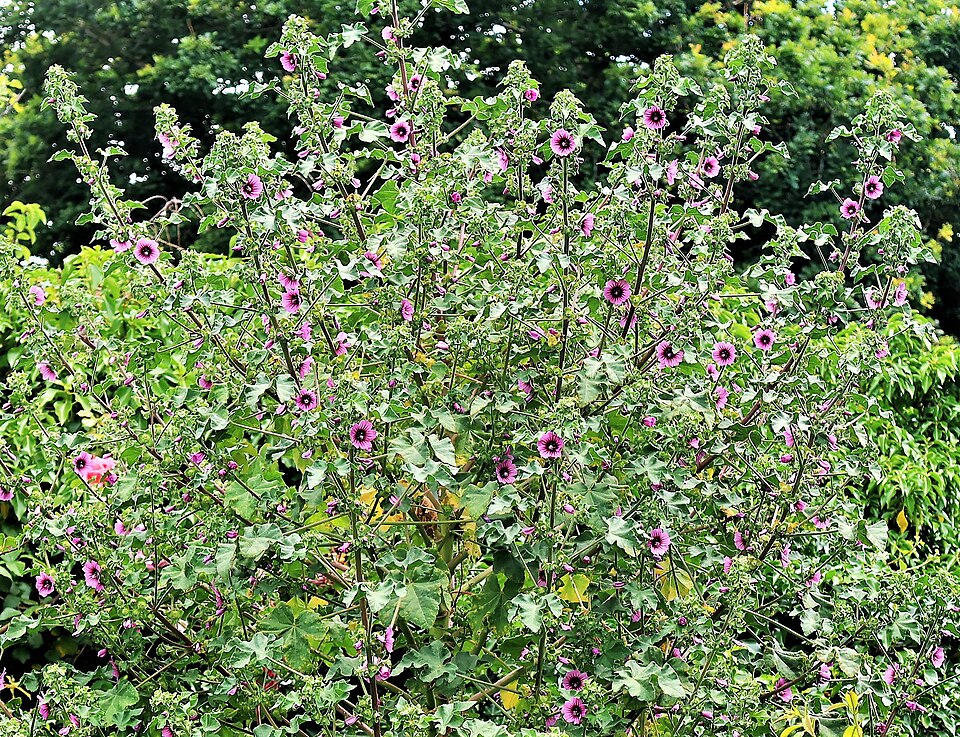
Tree Mallow is a fast-growing shrub that produces pink or lavender flowers throughout the summer. It grows between six to eight feet tall and prefers full sun and light, well-drained soil. The foliage is soft and silvery, making it a lovely backdrop for other blooms.
It does well in coastal or Mediterranean-style gardens due to its tolerance for wind and salt. While it may not survive harsh winters, it often reseeds or can be treated as an annual in colder areas. Tree Mallow adds both color and vertical structure to sunny beds. Pruning in early spring helps it maintain a tidy shape.
